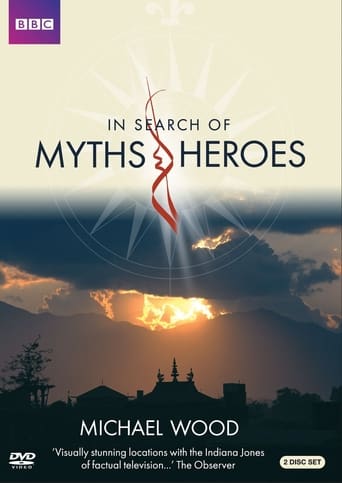
Shangri-La
The darker the age, the more desperate we are for illumination. This is certainly true of the tale of Shangri-La, which differs from other myths in that it's a largely modern story. In 1933, British novelist James Hilton published Lost Horizon, which became an instant hit with the public. It follows the fortunes of a group of Western travellers whose aeroplane crashes in the remote, unexplored part of the Himalayas that we now know as Tibet. The group find themselves in an earthly paradise, where materialism, modern cynicism - and the threat of war - are unknown. Despite its modernity as a popular myth, the notion of an earthly paradise beyond the Himalayas had been known to Western scholars for centuries.
Country: GB
Language: En
Runtime:
Season 1:

The story of the Queen of Sheba appears in religious texts sacred to Jews, Christians, and Muslims. Described in the Bible as simply a Queen of the East, modern scholars believe she came from the Kingdom of Axum in Ethiopia, the Kingdom of Saba in Yemen, or both. Their main clue is that she brought bales of incense with her as a gift; frankincense only grows in these two areas. Both countries claim her as theirs. Given that they are separated by only 25 kilometers of water, both could be right.

The darker the age, the more desperate we are for illumination. This is certainly true of the tale of Shangri-La, which differs from other myths in that it's a largely modern story. In 1933, British novelist James Hilton published Lost Horizon, which became an instant hit with the public. It follows the fortunes of a group of Western travellers whose aeroplane crashes in the remote, unexplored part of the Himalayas that we now know as Tibet. The group find themselves in an earthly paradise, where materialism, modern cynicism - and the threat of war - are unknown. Despite its modernity as a popular myth, the notion of an earthly paradise beyond the Himalayas had been known to Western scholars for centuries.

King Arthur, a 5th-century Celtic monarch who battled invading Anglo-Saxons, first appears in a history of Britain written in 830. The story was expanded in the 12th-century by Geoffrey of Monmouth, who most modern historians regard as primarily a writer of fiction. The Tudors popularised Arthur further, as did the Victorians.

Ancient Greek storytellers came up with several versions of the Jason myth but they all shared a central theme. Jason and his heroic warriors must travel across uncharted waters (the modern Black Sea) to secure a golden ram's fleece with mystical powers. Possession of this fleece will enable Jason to regain control of a kingdom his father once ruled. The first tales featuring Jason appeared around 800 BC but they were set 500 years earlier. The most famous version was written by Apollonius of Rhodes, during the 3rd century BC. Jason and the Argonauts (1963) is pure Hollywood. The screenplay takes as many liberties with the Greek myth as the original myth-makers took with Greek history. Todd Armstrong as Jason doesn't set the world alight but the special effects from stop-motion genius Ray Harryhausen are the best of their kind.


